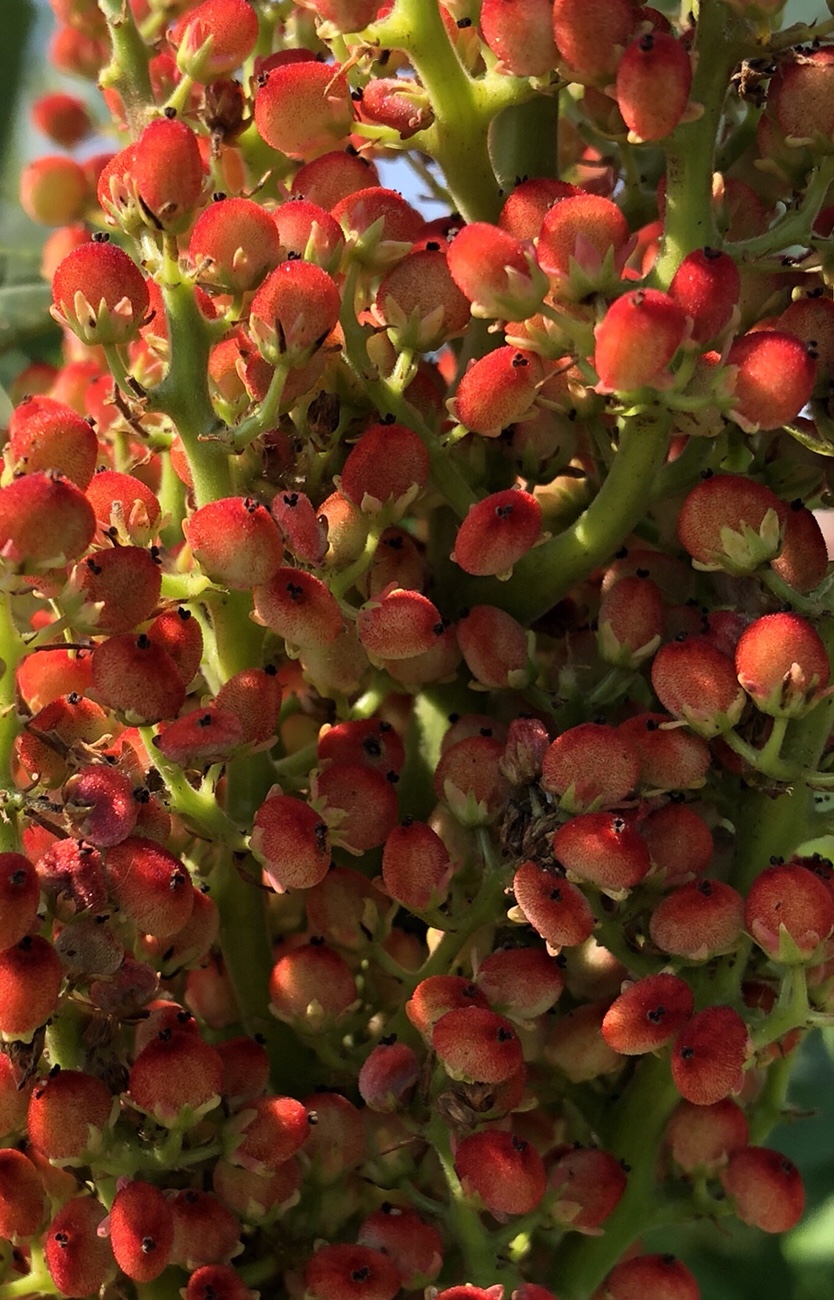
I’m always delighted to discover new wild-growing, useful plants on our property. I still remember the first time I spied small green spheres growing in the trees and wondered what in the world those pungent, citrus-scented globes were – hedge apples? It turns out that they were black walnuts! Lesson learned: never assume that a plant is “just a weed”.
Similarly, a leafy bush that springs up here and there on the property put up some strange-looking (but fragrant) flowers and when I researched it, I found out that it was Smooth Sumac, and that those weren’t flowers at all.
They were actually berries. Edible berries. Not the kind of berries you’d pick and pop into your mouth, but berries that could be used to make a tart “lemonade” (without lemons) and even wine!
Note: individuals who have known allergies to any member of the Cashew (Anacardiaceae) family, including poison ivy, poison sumac, poison oak, cashews, pistachios, and mangoes, should avoid consuming edible sumac. Learn more about the substance that triggers the allergic reaction, urushiol, here.

Smooth sumac is the variety we have here – it lacks the fuzzy, velvety coating that’s present on the Staghorn sumac. As with any foraged plant, you must be sure that you’ve correctly identified it as a plant that’s safe to eat. There is a poisonous sumac, too, but it has very different characteristics from the edible sumacs.
Know what you’re harvesting: with any wild plant, it’s critically important that you correctly identify it to avoid ingesting a potentially toxic lookalike. If you’re a novice forager, it would be prudent to have an expert instruct you in the proper identification of this or any plant with which you are unfamiliar before you eat or use it. In short, as is stated in this Guide for Foragers, “DO NOT EAT ANYTHING YOU CANNOT POSITIVELY IDENTIFY AND DEEM SAFE.”
From what I’ve read, edible sumac berries are typically ripe and ready for picking in August; when I recently tasted a berry, it was very hard and slightly tart, so I’m hoping that they have yet to ripen. The berries are also supposed to be harvested prior to hard rains…and – of course – it’s been stormy here. That’s all right, though…I’ll just be waiting for my chance to make something with these crimson beauties!
Want to find out what I did with these berries? Stay tuned for updates!

Comments are closed.